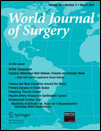Multivariable Analysis of Cholecystectomy after Gastrectomy: Laparoscopy is a Feasible Initial Approach even in the Presence of Common Bile Duct Stones or Acute Cholecystitis
Abstract
Background
When performing cholecystectomy after gastrectomy, we often encounter problems, such as adhesions, nutritional insufficiency, and bowel reconstruction. The purpose of this study was to identify the factors related to surgical outcome of these associated procedures, with emphasis on the use of a laparoscopic approach.
Methods
We retrospectively analyzed data from 58 patients who had a history of cholecystectomy after gastrectomy. Differences between subgroups with respect to operation time, length of postoperative hospital stay, and complications were analyzed. To identify the factors related with outcomes of cholecystectomy after gastrectomy, we performed multivariable analysis with the following variables: common bile duct (CBD) exploration, laparoscopic surgery, gender, acute cholecystitis, history of stomach cancer, age, body mass index, period of surgery, and interval between cholecystectomy and gastrectomy.
Results
We found one case (2.9%) of open conversion. The CBD exploration was the most significant independent factor (adjusted odds ratio (OR), 45.15; 95% confidence interval (CI), 4.53–450.55) related to longer operation time. Acute cholecystitis also was a significant independent factor (adjusted OR, 14.66; 95% CI, 1.46–147.4). The laparoscopic approach was not related to operation time but was related to a shorter hospital stay (adjusted OR, 0.057; 95% CI, 0.004–0.74). Acute cholecystitis was independently related to the occurrence of complications (adjusted OR, 27.68; 95% CI, 1.15–666.24); however, CBD exploration and laparoscopic surgery were not. A lower BMI also was an independent predictor of the occurrence of complications (adjusted OR, 0.41; 95% CI, 0.2–0.87).
Conclusions
The laparoscopic approach is feasible for cholecystectomy after gastrectomy, even in cases with CBD stones or acute cholecystitis. This approach does not appear to increase operation time or complication rate and was shown to decrease the length of postoperative hospital stay.




